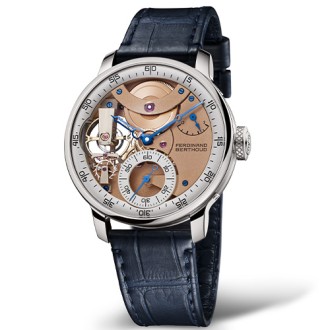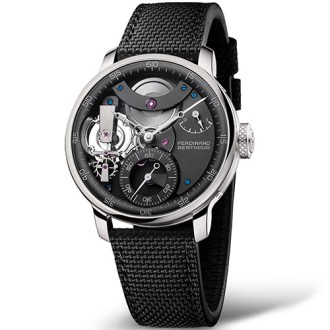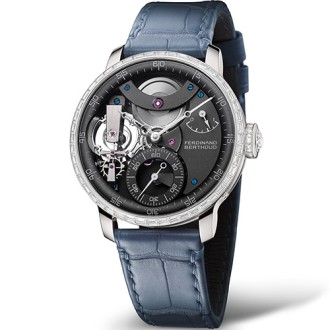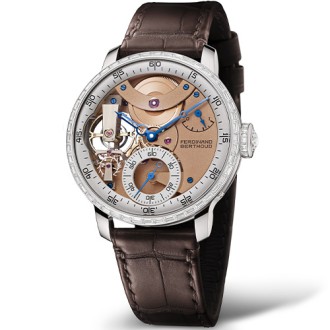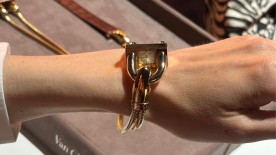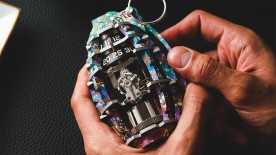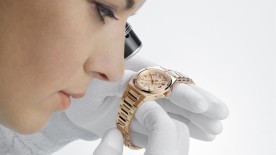Chopard co-president Karl-Friedrich Scheufele’s personal initiative to revive one of the most prolific 18th-century watchmakers – Ferdinand Berthoud – celebrates its 10th anniversary this year. Since the very first steps of the brand, “Karl-Friedrich wanted to create modern timekeepers, guided by the quest of precision initiated by the master watchmaker back in the 18th century,” said General Manager Vincent Lapaire.
The first decade is celebrated with three new platinum versions of the FB 3 – two of them with PVD-blackened dials, one of which is surrounded by sparkling baguette-cut diamonds.
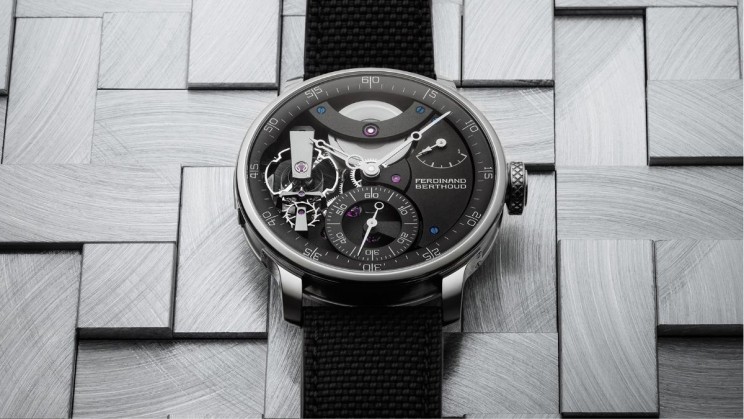
Despite such glamorous executions, it is of course the movement inside the 42.3 x 8.9-millimetre cases that is the real star. “When developing this movement, we were told: ‘it will be impossible to get the Chronometer certification by the COSC for such a movement’. But we really wanted to have this certification, just like all our movements, and we successfully made it,” Mr. Lapaire said.
The biggest challenge was the cylindrical hairspring. Back in the day they were mainly used on marine chronometers, and thus always horizontal thanks to the gimbal system on which they were mounted. With the plethora of angles a wristwatch may have, a lot of variables needed to be adapted. “All variables need to be perfectly balanced: numbers of coils of the hairspring, the shape of terminal curves, the mass of the pin and collet, et cetera,” Lapaire concluded about the accuracy advantage of a cylindrical spring, which comes from less friction at the balance pivots.
The FB 3 collection perfectly sums up the brand’s pursuit of ultimate precision. This world-first and only wristwatch with variable inertia balance and a cylindrical balance spring is not only chronometer-certified by the Official Swiss Chronometer Testing Institute (COSC); it also won the Chronometry prize at the Grand Prix d'Horlogerie de Genève (GPHG) in 2023. “Chronometry is part of our DNA,” Mr. Lapaire said about the historical watchmaker who was appointed Master clockmaker and mechanic to the French King and Navy back in the mid-18th century. “The Chronometry prize means a lot for us. We assume Ferdinand Berthoud himself would have been proud to see that we are respecting this legacy,” Mr. Lapaire said.
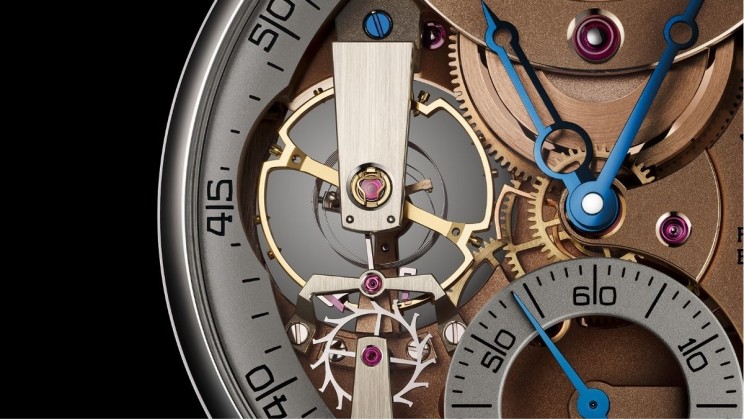
The watch could potentially also be eligible for design prizes. A rare semi-openworked approach reveals the mechanics on the left half of the watch, flaunting the balance spring, the escapement, the barrel, and part of the gong train.
Ten years into the brand, the production is around 30 timepieces per year. This is not only the maximum capacity of the dedicated team in Chopard’s Fleurier facility, but Lapaire feels that it is a sweet spot, “because of the quality criteria we want to maintain: each finished watch requires several hundred hours of decoration and is controlled under 6.7x magnification. There is no exception.”
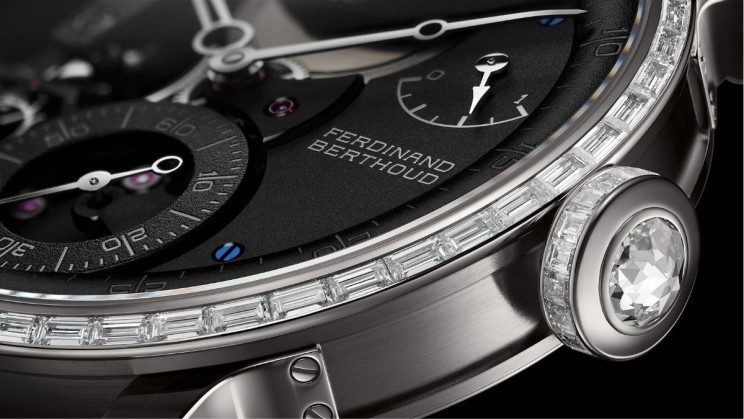
Platinum is becoming an under-the-radar material for discreet collectors. It’s a case of if you know, you know. Not only from its grey sheen optics, but also about the artisanal achievement: Unlike gold, platinum cannot be polished by pressing hard on the metal with a polishing brush. Doing so creates waves or a dull haze on the surface due to the molecular structure. Said Mr Lapaire: “Platinum is a noble material known for its inalterable nature, but is also very delicate to obtain a perfect polishing. For such a complex case as the FB 3, it demonstrates the expertise of our artisans. Incidentally, platinum was widely discovered by a Spanish explorer and writer, also member of the Royal Society at the same period of Ferdinand Berthoud, in the 18th century.”


